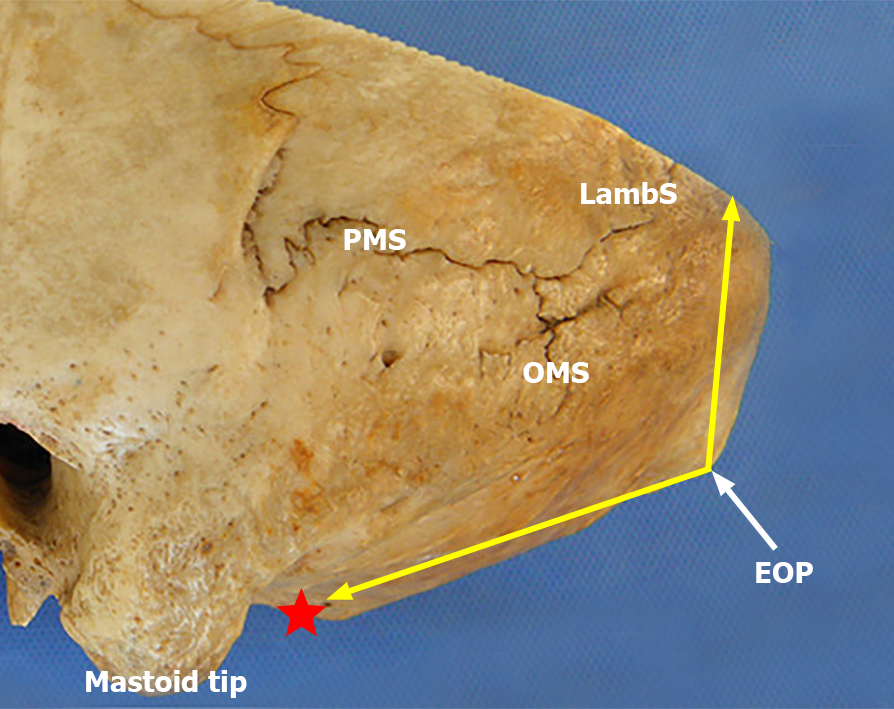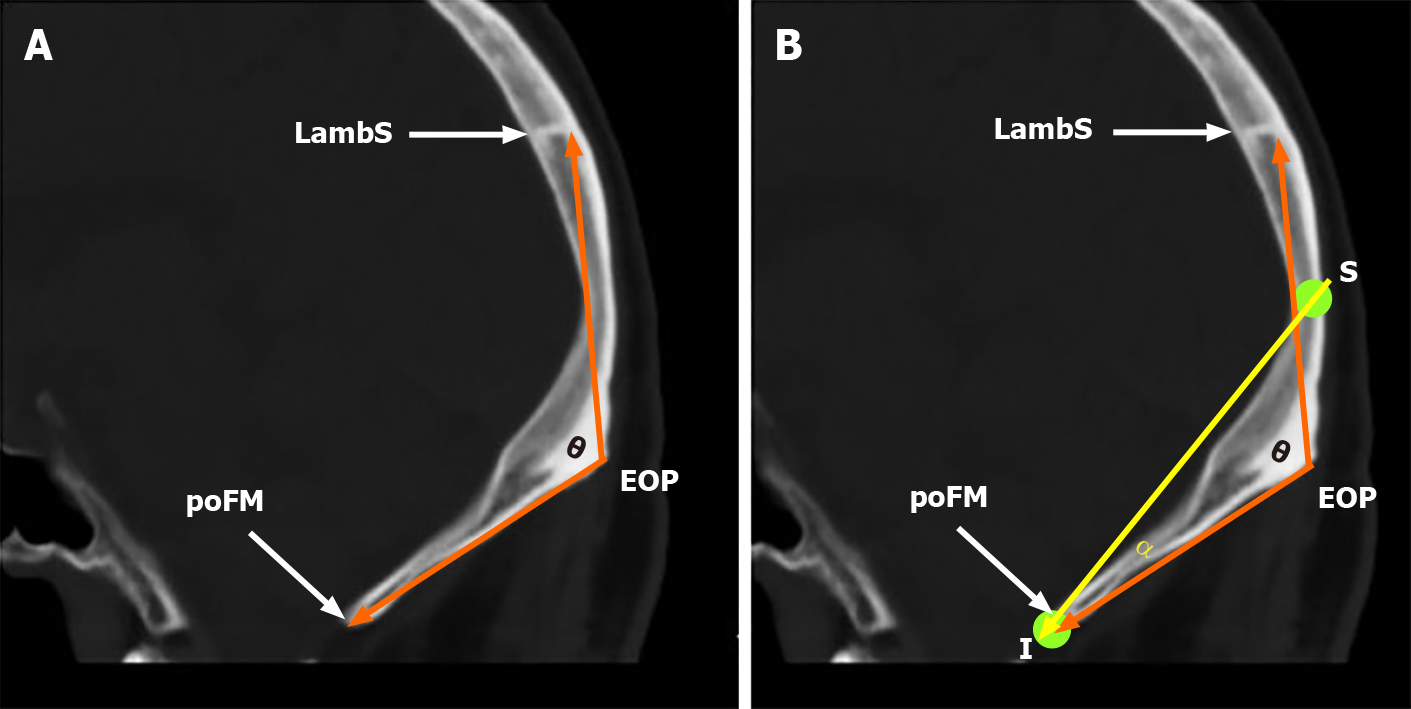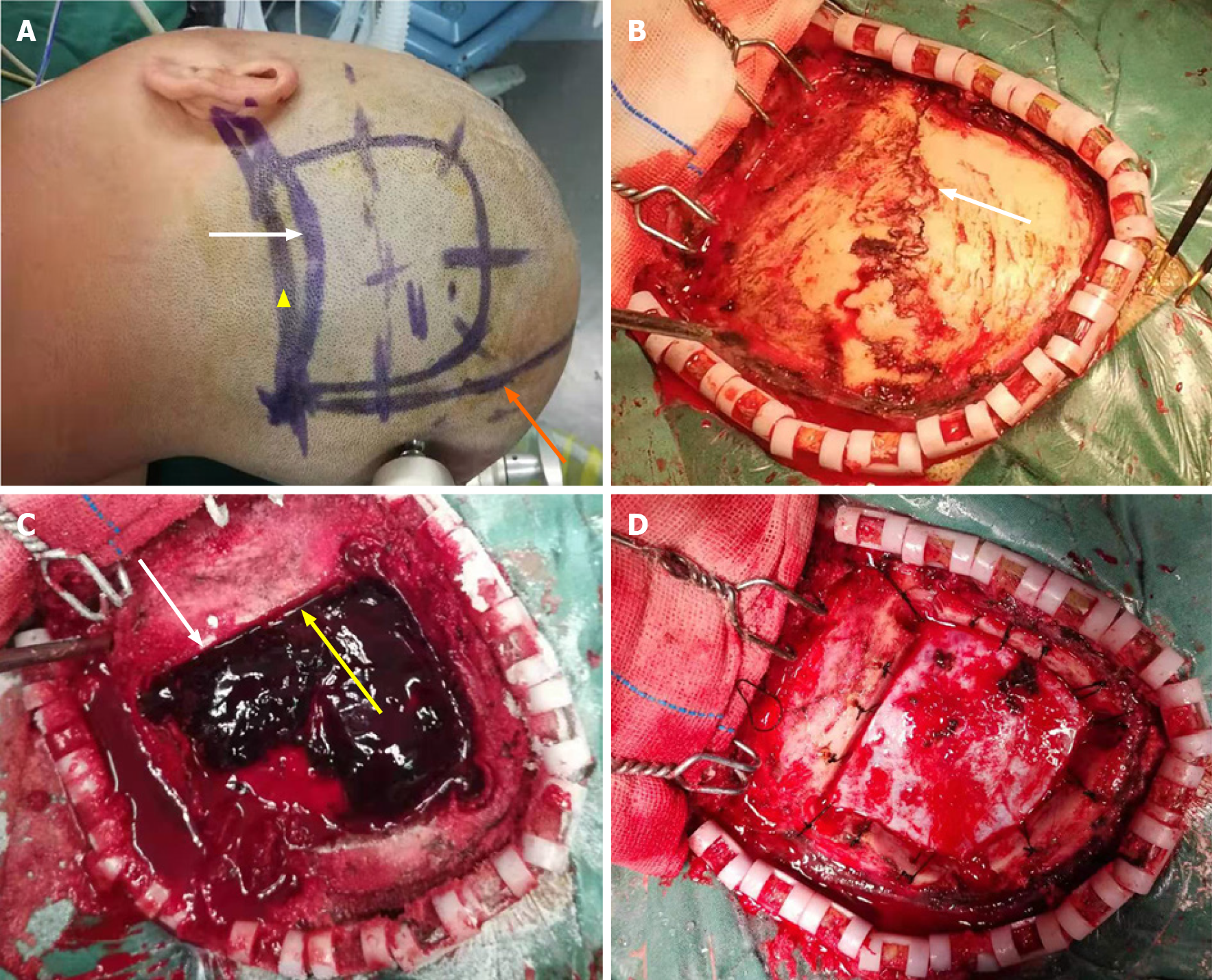Copyright
©The Author(s) 2022.
World J Clin Cases. Jan 14, 2022; 10(2): 477-484
Published online Jan 14, 2022. doi: 10.12998/wjcc.v10.i2.477
Published online Jan 14, 2022. doi: 10.12998/wjcc.v10.i2.477
Figure 1 Schematic representation of the angle of the squamous part of the occipital bone on the outer surface of the occipital bone.
The vertex of the angle of the squamous part of the occipital bone was located at the external occipital protuberance (EOP), while the two edges of the angle were demonstrated by two yellow arrow lines directed from the EOP to the lambdoid suture and the posterior edge of the foramen magnum (red star) in the median sagittal plane, respectively. OMS: Occipitomastoid suture; PMS: Parietomastoid suture; LambS: Lambdoid suture; EOP: External occipital protuberance.
Figure 2 Schematic representation of the angle of the squamous part of the occipital bone and the operative angle for the supra- and infratentorial epidural hematoma on the median sagittal plane of the computed tomography scan.
A: The angle of the squamous part of the occipital bone, symbolized as θ, was defined between two orange arrow lines from the external occipital protuberance (EOP) to the lambdoid suture (LambS) and to the posterior edge of the foramen magnum (poFM), respectively. The EOP is located at the level of the transverse sinus; B: The “S” denotes the midpoint between the EOP and the LambS; the “I” denotes the point of the poFM. The α represents the operative angle for the supra- and infratentorial epidural hematoma. As the θ is less than 180, the angle α is not equal to zero. EOP: External occipital protuberance; LambS: Lambdoid suture; poFM: Posterior edge of the foramen magnum.
Figure 3 Modified surgical method of supra- and infratentorial epidural hematoma.
A: The white arrow points to the surface projection of the transverse sinus. The skin flap was close to the midline medially, reaching the lateral edge of the hematoma laterally, up to the upper edge of the hematoma superiorly, and about 1 cm below the transverse sinus inferiorly (yellow triangle). The lower edge of the bone flap was located at the upper edge of the transverse sinus. The orange arrow indicates the midline of the head; B: After elevating the skin flap, a linear fracture of the occipital bone was found (white arrow); C: Subsequently the bone flap was opened to expose the supra- and infratentorial epidural hematoma (SIEDH). The white arrow shows the lower edge of the bone window across the superior edge of the transverse sinus. The yellow arrow demonstrated that the SIEDH can be cleared from above to below the transverse sinus; D: After the SIEDH was completely removed, the dura was tightly suspended on the periosteum.
Figure 4 A pre- and postoperative computed tomography scan of a 29-year-old man after a traffic accident.
A: The preoperative computed tomography (CT) scan showed the left supra- and infratentorial acute epidural hematoma (SIEDH) across the transverse sinus and the local occipital scalp hematoma; B: 24 h after surgery, the head CT showed that the SIEDH was completely cleared and the bone flap was perfectly fixed in situ.
- Citation: Li RC, Guo SW, Liang C. Modified surgical method of supra- and infratentorial epidural hematoma and the related anatomical study of the squamous part of the occipital bone. World J Clin Cases 2022; 10(2): 477-484
- URL: https://www.wjgnet.com/2307-8960/full/v10/i2/477.htm
- DOI: https://dx.doi.org/10.12998/wjcc.v10.i2.477
















